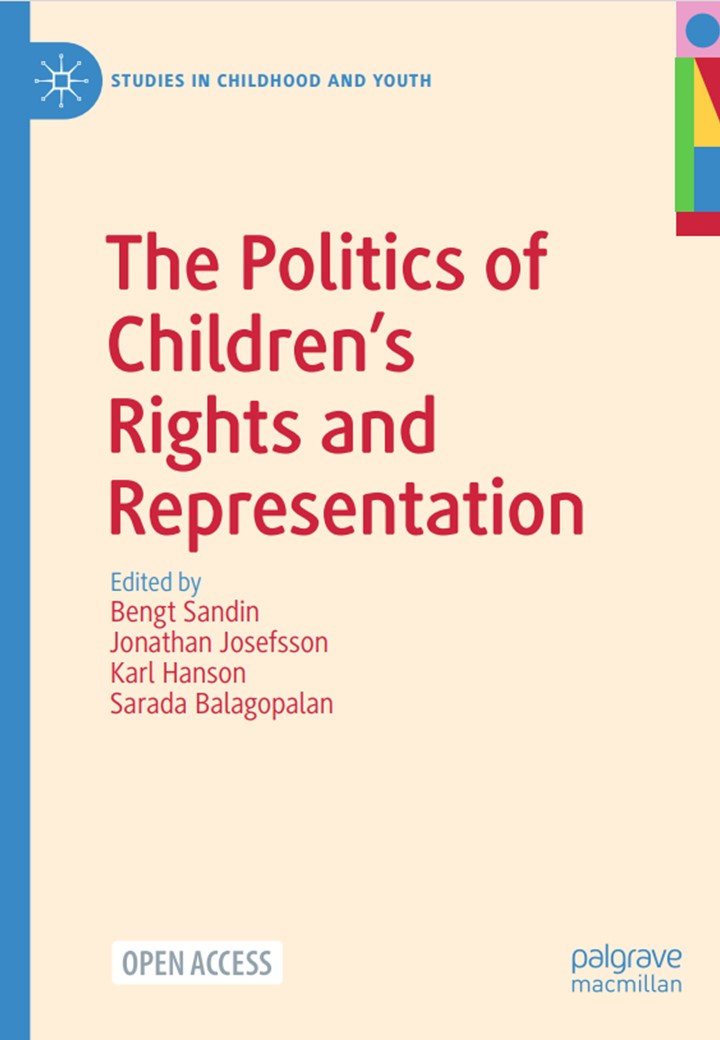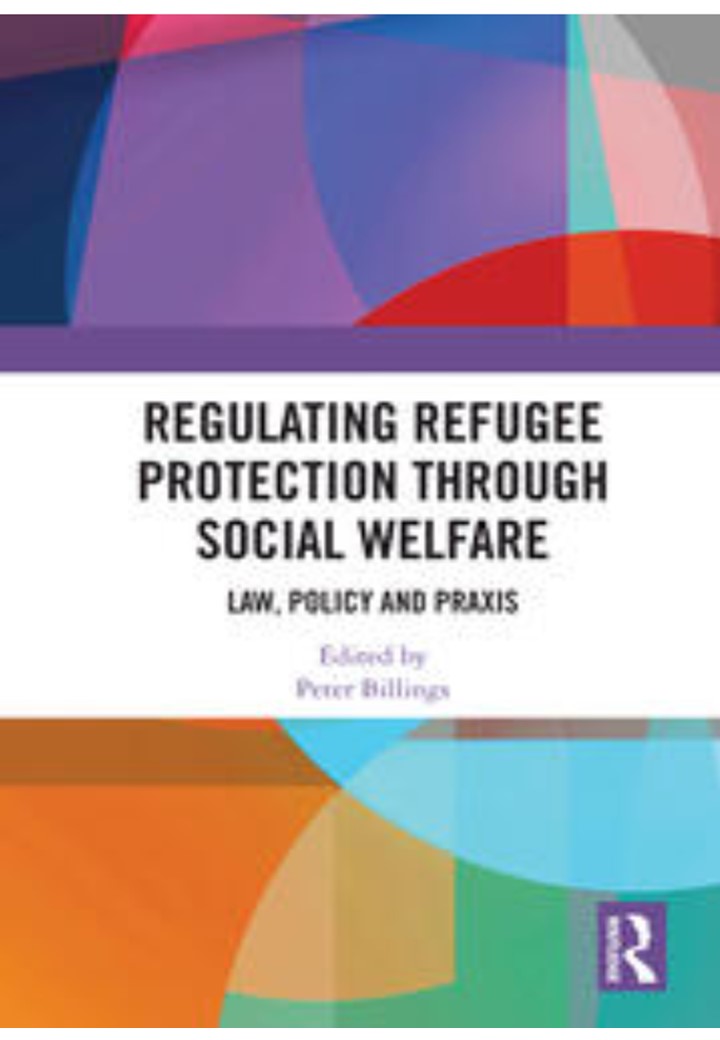Human service workers and the law
Featured eResources
-
 The Politics of Children's Rights and Representation
by
Publication Date: 2023Investigates the deep entanglement of children and youth in today's major global, national, and local transformations and processes: wherein they are not mere spectators and objects of transformations but instead actively shape them.
The Politics of Children's Rights and Representation
by
Publication Date: 2023Investigates the deep entanglement of children and youth in today's major global, national, and local transformations and processes: wherein they are not mere spectators and objects of transformations but instead actively shape them. -
 Regulating refugee protection through social welfare : law, policy and praxis
by
Publication Date: 2023This book analyses the use and abuse of social welfare as a means of border control for asylum seekers and refugees in Australia.
Regulating refugee protection through social welfare : law, policy and praxis
by
Publication Date: 2023This book analyses the use and abuse of social welfare as a means of border control for asylum seekers and refugees in Australia. -
 Teaching human rights-based social work in Australia – drawing from practice experiences in diverse environments
by
Publication Date: 2024This reflective piece considers the author’s formative professional experiences including working in the criminal justice system in Central Australia, and conducting humanitarian monitoring of immigration detention centers across Australia, both environments where the human rights of those impacted were constrained through the domestic legal frameworks.
Teaching human rights-based social work in Australia – drawing from practice experiences in diverse environments
by
Publication Date: 2024This reflective piece considers the author’s formative professional experiences including working in the criminal justice system in Central Australia, and conducting humanitarian monitoring of immigration detention centers across Australia, both environments where the human rights of those impacted were constrained through the domestic legal frameworks. -
'Crossover' Children in the Youth Justice and Child Protection Systems by
Publication Date: 2019Explores the outcomes faced by the group of children who experience involvement with both child protection and youth justice systems across several countries, including the United States, United Kingdom, Canada, New Zealand, and Australia. -
Community justice in Australia: Developing Knowledge, Skills and Values for Working With Offenders in the Community by
Publication Date: 2023Considers how the concept of community justice can be successfully applied within Australia by social workers, criminologists, parole officers and anyone working in the community with both adults and young people.
Courts and community legal centres
Courts
-
Courts Administration Authority of South Australia (State)Information about the courts and links to relevant legislation.
-
The Federal Circuit and Family Court of AustraliaThe Federal Circuit and Family Court of Australia is a single point of entry for all family law matters in Australia
-
Beyond common knowledge: Reviewing the use of social science evidence in Australian courtsThis 2019 article from the University of Queensland Law Journal comments on three ways social facts are used in the course of judicial decision making.
-
Caring for Families in Court: An Essential Approach to Family JusticeThis 2019 book looks at family justice from an international perspective.
Community legal centres
-
Legal Services Commission of South AustraliaAn independent statutory authority, it is established by the Legal Services Commission Act 1977 (SA) (the Act) to provide legal assistance to people throughout the State. Legal Services is funded by both the South Australian and Commonwealth governments and has the powers, functions and duties prescribed by the Act.
-
National Association of Community Legal CentresWebsite of the association of state community legal centre organisations in Australia.
-
Access to Justice Arrangements: submission to the Productivity Commission2013 - prepared by a number of the peak organisations for Australia’s community legal centres in response to the Productivity Commission’s Access to Justice Issues Paper. Covers the nature, activities, role and funding of community legal centres.
-
Access to Justice Arrangements: inquiry report2014 - report by the Commonwealth Productivity Commission on its 'inquiry into Australia's system of civil dispute resolution, with a focus on constraining costs and promoting access to justice and equality before the law'.
Reports and statistics
Search these key websites to find reports and statistics:
-
Australian Human Rights CommissionIndependent statutory body that reports to the federal parliament; formally the Human Rights and Equal Opportunity Commission.
-
Australian Institute of CriminologyAustralia's national research and knowledge centre on crime and justice.
-
Australian Institute of Family Studies (AIFS)Australia's foremost centre for research and information on family wellbeing.
-
Australian Institute of Health and Welfare (AIHW)Leading health and welfare statistics agency in Australia.
-
Australia’s National Research Organisation for Women’s Safety (ANROWS)Independent, not for profit organisation established to produce evidence to support the reduction of violence against women and their children.
-
Crime and justice data South AustraliaData regarding crime in South Australia gathered from different government agencies.
Legislation
Help with legal research
The Law Research Guide has been designed to teach basic legal research skills and teach you how to find legal information to use in your studies.
-
South Australian LegislationAccess to South Australian legislation and includes information about the creation, variation or cessation of legislation. Updated every weekday.
-
Subject Index to South Australian LegislationProvides a subject index to SA Acts and incorporates links to the South Australian Legislation website.
-
LawlexCan search concurrently across all the State, Territory and Commonwealth legislation websites, with links to associated legislative material such as bills, subordinate legislation, second reading speeches and gazette notices.
-
Department of Social Services (Commonwealth) - LegislationAccess legislation relating to the Department and its portfolio. Includes Guides to Paid Parental Leave, Social Security Law, Family Assistance, and Child Support.
-
Parliamentary Library - Family LawLists links to key documents in the area of federal family law.
Legal terminology
Need help with legal terminology? These key resources can help clarify or define terms:
-
Encyclopaedic Australian Legal DictionaryContains over 25,000 definitions (legal words and phrases, including references to legislation and cases) presented in an Australian context
-
Halsbury's Laws of AustraliaA legal encyclopaedia providing a comprehensive overview of Australian law. Halsbury's 89 titles cover both mainstream and little known subject areas.
-
Law Handbook (Legal Services Commission of SA)Contains an overview of the law in South Australia presented in everyday language
